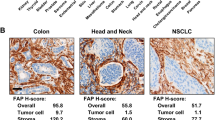Abstract
Purpose
3’-[F-18]Fluoro-3’-deoxythymidine (FLT) is an analog of thymidine that is being developed for imaging cellular proliferation. The goal of this study was to prove that the dose of FLT used for positron emission tomography imaging produces no significant toxicity.
Procedures
Twelve patients with gliomas with either recurrence or suspected radionecrosis were imaged with FLT. Before and at several time points after imaging, subjects underwent general physical and neurological examinations with review of systems and tests of hematologic, hepatic, renal, and several other metabolic parameters. Vital signs and electrocardiograms were monitored during and after the imaging session.
Results
There were no significant adverse effects from FLT injected at a dose of 0.07 mCi/kg (maximum of 5 mCi) at specific activities of 1.25 Ci/μmol or higher. The FLT mass administered for imaging was 0.0001% to 0.0009% of the least toxic cumulative dose administered in clinical trials of FLT as an antiretroviral agent.
Conclusions
FLT is a safe radiotracer for quantifying proliferation in the human cancer setting.





Similar content being viewed by others
References
Grierson JR, Shields AF (2000) Radiosynthesis of 3’-deoxy-3’- [(18)F]fluorothymidine: [(18)F]FLT for imaging of cellular proliferation in vivo. Nucl Med Biol 27:143–156
Shields AF, Grierson JR, Dohmen BM, et al. (1998) Imaging proliferation in vivo with [F-18]FLT and positron emission tomography. Nat Med 4:1334–1336
Grierson JR, Schwartz JL, Muzi M, Jordan R, Krohn KA (2004) Metabolism of 3’-deoxy-3’-[F-18]fluorothymidine in proliferating A549 cells: validations for positron emission tomography. Nucl Med Biol 31:829–837
Langen P, Etzold G, Hintsche R, Kowollik G (1969) 3’-Deoxy-3’-fluorothymidine, a new selective inhibitor of DNA-synthesis. Acta Biol Med Ger 23:759–766
Langen P, Graetz H (1972) Cell death resulting from inhibition by 3’-deoxy-3’-fluorothymidine, cytosine-arabinoside, 5-fluoro-2’- deoxyuridine, and hydroxyurea of DNA synthesis in cultured Ehrich ascites carcinoma cells. Studia Biophys 31/32:359–366
Langen P, Kowollik G, Etzold G, Venner H, Reinert H (1972) The phosphorylation of 3’-deoxy-3’-fluorothymidine and its incorporation into DNA in a cellfree system from tumor cells. Acta Biol Med Ger 29:483–494
Matthes E, Lehmann C, Scholz D, Rosenthal HA, Langen P (1988) Phosphorylation, anti-HIV activity and cytotoxicity of 3’-fluorothymidine. Biochem Biophys Res Commun 153:825–831
Faraj A, Fowler DA, Bridges EG, Sommadossi JP (1994) Effects of 2’,3’-dideoxynucleosides on proliferation and differentiation of human pluripotent progenitors in liquid culture and their effects on mitochondrial DNA synthesis. Antimicrob Agents Chemother 38:924–930
Flexner C, van der Horst C, Jacobson MA, et al. (1994) Relationship between plasma concentrations of 3’-deoxy-3’-fluorothymidine (alovudine) and antiretroviral activity in two concentration-controlled trials. J Infect Dis 170:1394–1403
Matthes E, Lehmann C, Scholz D, et al. (1987) Inhibition of HIV-associated reverse transcriptase by sugar-modified derivatives of thymidine 5’-triphosphate in comparison to cellular DNA polymerases alpha and beta. Biochem Biophys Res Commun 148:78–85
Sundseth R, Joyner SS, Moore JT, Dornsife RE, Dev IK (1996) The anti-human immunodeficiency virus agent 3’-fluorothymidine induces DNA damage and apoptosis in human lymphoblastoid cells. Antimicrob Agents Chemother 40:331–335
Turcotte E, Wiens LW, Grierson JR, Peterson LM, Wener MH, Vesselle H (2007) Toxicology evaluation of radiotracer doses of 3’-deoxy-3’-[18F]fluorothymidine (18F-FLT) for human PET imaging: laboratory analysis of serial blood samples and comparison to previously investigated therapeutic FLT doses. BMC Nucl Med 7:3 Electronic
Muzi M, Spence AM, O’Sullivan F, et al. (2006) Kinetic analysis of 3’-deoxy-3’-18F-fluorothymidine in patients with gliomas. J Nucl Med 47:1612–1621
Graham MM, Lewellen BL (1993) High-speed automated discrete blood sampling for positron emission tomography. J Nucl Med 34:1357–1360
Lewellen TK, Kohlmyer SG, Miyaoka RS, Kaplan MS, Stearns CW, Schubert SF (1996) Investigation of the performance of the General Electric ADVANCE positron emission tomograph in 3D mode. IEEE Trans Nucl Sci 43:2199–2206
Kinahan PE, Townsend DW, Beyer T, Sashin D (1998) Attenuation correction for a combined 3D PET/CT scanner. Med Phys 25:2046–2053
Lundgren B, Bottiger D, Ljungdahl-Stahle E, et al. (1991) Antiviral effects of 3’-fluorothymidine and 3’-azidothymidine in cynomolgus monkeys infected with simian immunodeficiency virus. J Acquir Immune Defic Syndr 4:489–498
Muzi M, Mankoff DA, Grierson JR, Wells JM, Vesselle H, Krohn KA (2005) Kinetic modeling of 3’-deoxy-3’-fluorothymidine in somatic tumors: mathematical studies. J Nucl Med 46:371–380
Graham MM (1997) Physiologic smoothing of blood time-activity curves for PET data analysis. J Nucl Med 38:1161–1168
Acknowledgments
Lalitha K. Shankar, M.D., Ph.D., and Paula M. Jacobs, Ph.D. are gratefully acknowledged for their indispensable help with the contracts and the statistical analyses. This study was supported by National Cancer Institute Contract N01-CM-37008, Subcontract NCI (CIP/SAIC) BOA 24XS036 and S10 RR17229.
Author information
Authors and Affiliations
Corresponding author
Rights and permissions
About this article
Cite this article
Spence, A.M., Muzi, M., Link, J.M. et al. NCI-Sponsored Trial for the Evaluation of Safety and Preliminary Efficacy of FLT as a Marker of Proliferation in Patients with Recurrent Gliomas: Safety Studies. Mol Imaging Biol 10, 271–280 (2008). https://doi.org/10.1007/s11307-008-0151-6
Received:
Revised:
Accepted:
Published:
Issue Date:
DOI: https://doi.org/10.1007/s11307-008-0151-6




